Leading Network Rail has never been an easy job, not least because of its previously rather odd status as an entirely independent and notionally private company, but one whose entire business has always depended on government.
And the changes implemented in September, when NR was placed ‘on the public books’, made NR’s top job if not harder, then much riskier, given the sweeping powers over the organisation taken by the Secretary of State for Transport and the even more intense potential public scrutiny.
A decidedly odd construct, NR is supposedly a private company with no shareholders, whose strategic direction is theoretically steered by its members (somewhere between 30 and 50 of them). These members are, however, all effectively appointed by the company’s board, and so effective corporate governance has always been somewhat sceptically regarded by industry and commentators alike.
The negative perceptions created by a Board that appoints the panel of members who are then supposed to hold it to account are both obvious and powerful. This led to NR’s members never being taken especially seriously, putting an even greater focus on its chief executive. This position has always attracted more attention than that of non-executive chairman, who has usually been of much lower public profile.
This unusual corporate status was the brainchild and creation of Gordon Brown, who, as Chancellor of the Exchequer when Railtrack went bust in 2001, wanted a way to keep our railways running without any negative impact on public borrowing. The result was Network Rail - a notionally private company whose finances were effectively underpinned by taxpayers, but whose large debt was (as a result of this bureaucratic bodyswerve) kept off the public balance sheet.
This attracted controversy and criticism from the start, but for a decade or so the barbs of critics and the rumblings of discontent from the Public Accounts Committee were deflected and controlled.
Thus, the company rolled on through the leadership of three chief executives: the urbane and effective John Armitt; uncompromising control by Iain Coucher, under whom central control was ruthlessly enforced; and then the quiet but very successful David Higgins, who devolved power to the routes.
Armitt and Higgins were both subsequently knighted, and continue to develop very successful public service infrastructure roles. Coucher vanished back into the specialist defence sector, his inflexible central control at Network Rail having been systematically dismantled by Higgins, who devolved power and control back to regional management.
Higgins was not just effective, however, but popular. He’s one of those leaders whose authority does not depend on management by fear or throwing his weight around. Like others of similar approach - Christopher Garnett, Ed Burkhardt, Chris Green or Adrian Shooter - he won intense loyalty and commitment among his staff as a result.
Higgins was one of those leaders who managed to pull off that difficult trick of being both popular and respected. Having earned a solid reputation as the man who delivered the 2012 Olympics on time and on budget, and having rescuscitated Network Rail after a period of demoralising (and paralysing) central control, Higgins was always going to be a tough act to follow as chief executive at NR, on whose shoulders approximately 35,000 staff and 24,000 trains a day depend.
So when Higgins announced his forthcoming departure in July 2013 (it actually happened in April 2014), bound for the chairman’s job at HS2 Ltd, the headhunters got to work.
Intense industry speculation accompanied the surreptitious shoulder-tapping and interviewing that followed. Would it be an internal appointment? Or would another ‘outsider’ be brought in, to ensure there was no lack of new thinking, new approaches or new ideas?
Eventually it was announced that the job had gone to 55-year-old career oil and gas executive Mark Carne, latterly executive vice president for Middle East and North Africa at Shell.
Here was a man whose working life had been spent in high-risk, capital-intensive business where asset and risk management were paramount. On the face of it, Carne was a good fit.
As always, rail industry reaction was the usual mixture of “Who is he?” and “What’s his past and reputation?”
We found out soon enough, because Carne wasted absolutely no time. Within hours of his arrival at Network Rail’s Kings Place smoked-glass offices overlooking the King’s Cross station throat, Carne swapped his (very) expensively tailored suit jacket for brand new high-vis - and off he went on our 11,000 route mile national network.
He threw himself into an intense and exhausting (according to the staff tasked with arranging and accompanying) nationwide ballast-to-boardroom induction that took him from trackside to control room, and from offices to on-track machines in a series of fact-finding and familiarisation visits.
Old hand NR Head of Media Kevin Groves, who has been handling NR media communications throughout my 19 years at RAIL, was taken aback by Carne’s pace and depth of nationwide activity.
“I’ve never seen anything like it,”
he says. “He was into absolutely
everything, and had an insatiable
curiosity to meet our people and not only
find out what the company actually does -
but what makes it really tick.”
I was offered an early opportunity to meet Carne and see him in action. Not long after he took over, I was asked by another NR executive if I’d help out at a couple of the company’s annual staff briefing presentations.
Early each year, a handful of NR’s top men and women, led by the chief executive, update staff on the company’s progress and the latest plans, and answer questions. I was invited to speak as an informed company outsider at two of these sessions, about how NR is seen by the rest of us. This was a brave request, and I enjoyed speaking candidly to the 600 or so staff involved.
There were two presentations in Birmingham, before and after lunch, and so I was able to watch Carne at close quarters, talking about his approach, his belief and his plans. He was listened to intently - those on the payroll were keen to hear his views and opinions at first hand.
The first thing that strikes you about Carne is that he is measured, polite, quietly spoken and a good listener. An interesting detail is that the man is immaculately groomed - and I do mean immaculately. Not a hair out of place. Elegant and expensive tailoring. He is completely assured, confident, and seemingly unfazed by whatever is happening around him.
We met a couple of times for this interview, at the Kings Place offices that the company is vacating. As ever, he was friendly, open and welcoming, and there were no questions that he fudged or declined to answer.
You only get the one chance for first impressions. So what were his like, given that at the time Dawlish was in full swing?
There is no hesitation… this is an easy one.
“I had such a strong first impression because I arrived at a time of enormous challenge for Network Rail and for railways as a whole,” he begins.
“To be thrown in literally at the deep end, with the floods and chaos, was such a great opportunity because it enabled me to see what this company is capable of doing, and what the railway is capable of doing when the chips are down.”
I point out that the railway always pulls together and excels in a crisis.
“The way people came together was exceptional,” he agrees. “I think the unique features of that crisis were the way in which it didn’t matter what company you worked for - whether you were a contractor or a sub-contractor, or the head of Network Rail. Everyone came together as an industry to sort out the problems and that’s what made me realise what this industry is capable of delivering.
“It was fantastic and I was hugely impressed. And that has stayed with me - that sense of the capacity of the industry. We all know that life isn’t a full-time crisis and we don’t run the industry in a crisis mode all the time. But what it did highlight was that we have this capacity to achieve great things. The trick we have to find is how to deliver that kind of performance as an industry every day, rather than just turning it on when there is a crisis.”
Did it help that public and media scrutiny were on the spectacular scenes of flooding - not focusing on Network Rail?
“I suppose the other thing about that crisis was it showed the scale of what we face. The railway was washed away not just at Dawlish, but also throughout the country.
“We had 280 places where the railway was under water, and it was just so obvious that the public were incredibly supportive. It’s so motivating for NR staff - when they feel that the public are actually behind them and want them to succeed, it drives them on.”
Carne speaks especially warmly of how the people of Dawlish welcomed and supported what came to be known nationally as ‘the Orange Army.’
“They were bringing out tea and sandwiches and pizza, and it was just great,” he says. “There was this great sense of community spirit that pulled everybody together and made people really bring their best to their work. That’s the sort of sense that I had right at the beginning about what this organisation and this industry is capable of, and nothing that I have seen over the past few weeks and months has made me doubt that.”
So, no “OMG - what have I done?” moments?
Carne laughs. “No! Not at all! Actually I feel more excited about the opportunity today than I did back then.”
I raise an eyebrow. “Genuinely - I do! I think this is an extraordinary industry that plays a vital role in the economy of the country. And I see, with a great team of people, we have an opportunity to do so much more.”
Carne points out that the scale of the job and the high stakes, not least in terms of public perceptions, were part of what attracted him to the job. He says he enjoys running big organisations, especially those that make a big and obvious contribution to the everyday lives of millions of people. That certainly applied to oil and gas, and he also sees it in the railway.
“I like to do things that matter - and by that I mean things that matter in more than just the pounds, shillings and pence of the bottom line,” he stresses. “I’m talking about the contribution that they make to society - and the railway does make a huge contribution to society.”
While Dawlish was a very high-profile example of NR staff toiling with contractors and train operators round the clock, in terrible conditions, to fix the railway even as they continued to serve the public, he’s very keen to highlight that this effort happens 24/7, 365 days a year on the railway, in circumstances that do not generally get noticed.
OK, so that’s the ‘motherhood and apple pie stuff’ flagged. What about the problems? What things has he noticed, as a newcomer, that need to change, improve and develop?
“We have challenges - and therefore opportunities - in four big categories,” he says. He counts them off: “Improving safety, improving reliability, increasing capacity, and reducing cost.” He pauses - and then repeats them for emphasis.
“Safety, reliability, capacity and cost - those are the four imperatives that we have to focus on. So let me take each in those in turn, and say what we have to do differently.
“Safety - from a passenger safety perspective we have the safest passenger railway in Europe and that’s a huge reflection of the work done over the past decade or more to improve the underlying asset reliability of our railway since the dark days of the late 1990s to 2000s.
“Tremendous progress has been made - and yet I know that there is more that we can do to further improve the integrity of the railways and passenger safety. That’s what we are committed to.
“Second dimension of safety - level crossings. Forty people lost their lives in Control Period 4 at level crossings, and that’s just unacceptable. This is a huge challenge for us - 6,500 level crossings, many of which have no barriers and no warning systems at all, other than a sign that says: ‘stop, look and listen’. This is a massive challenge.
“But the other element is workforce safety, and I believe that there is a real opportunity to improve workforce safety culture on the railway as a whole. When we do that, we will also improve performance culture within the railway. So that is going to be a particular focus for me, because I fundamentally believe that safety and performance go hand in hand - they are inextricably connected.”
So your approach to safety is not that it’s a bolt-on aspect of asset management?
“It is not a bolt on and it’s not a choice - safety and performance are one and the same thing, and in the best companies that I’ve worked with around the world, you see that. The best companies have the best safety performance and they also deliver the best business people.”
Hasn’t the way in which the industry has progressively added new layers of procedures or equipment, in response to mishaps or as a result of political pressure, led to a cultural belief that someone else is responsible for safety management? With regard to the workforce safety he is so exercised about (and he is), what about the old adage that the person most responsible for your safety is you?
“Yes, that’s an old cliché, but it’s absolutely right. Safety is not somebody else’s job, and we need to get back to the sense where everybody is accountable for their own safety, but also for the safety of the people that work around them,” he replies.
“We have to create the kind of caring intervention culture where we are constantly striving to see how we can keep ourselves and our colleagues safe. I also believe that focusing on workforce safety will drive improvements not only in our underlying business performance, but improvements in railway safety more widely, because you can’t do one without the other.
“It’s just a way of thinking. It’s a way of being. It’s a huge opportunity for us because the workforce railway safety performance is far below that we know is capable of being achieved, and which you can see in other industries.”
Carne has been using some startling figures in conference presentations - at one early outing, I heard him say that workforce safety is 20 times worse than in other industries?
“That was an extreme example,” he says. “I think it’s about ten times worse, more generally - it depends how you measure it and which part of the oil and gas industry you look at. But however you look at it, rail worker safety is about ten times worse than the oil and gas industry in terms of fatalities, and that is a very substantial difference from where we are in the railway industry. And this is still heavy engineering projects, and similar kinds of activity - so the comparison is valid. Our safety is just not good enough.”
So is this the result of poor procedures, people problems, or culture - or all three?
“It’s a bit of everything actually - but planning is a major issue. We need to improve the way we plan how work is carried out on the railway. We have great examples of when we do it brilliantly, and this inconsistency is one of the frustrations. There are many very big projects where we have a planned blockade or a planned possession where planning is absolutely first class. But we also have more routine interventions - overnight possessions, for example - where frankly, planning is far below standard.
“In these cases, you end up with the wrong equipment arriving, or the wrong people arriving with the wrong tools - maybe even the wrong people. This results in poor efficiency, higher cost, and unfortunately you also sometimes end up with people getting hurt. This is really a case where safety and performance go hand in hand - better quality planning will give us better safety.”
Carne is a former oil and gas man who went through the North Sea Piper Alpha disaster of July 6 1988, when 167 men died when the gas production platform exploded, leaving only 61 survivors. Such experience always leaves a very clear and absolutely determined view of workforce safety.
Network Rail has a poor reputation for late planning, last minute re-scoping, and certainly for delivery of the wrong equipment to worksites, or for the failure of equipment to even show up. This leads to the sort of ‘make do and mend’ engineering arrangements of which Carne is so critical.
“That pre-job planning is absolutely critical to a successful job,” he says. “It means you do the job efficiently, it means you have the right number of people you need and only the right number of people you need. You don’t flood the job with people who are standing around looking at it - you just bring the people you need who do the job.”
Carne is not the first CEO from whom I’ve heard similar sentiments, and only time will tell if he is the first to make a major impact on NR’s seeming addiction to late re-scoping in particular. He has certainly planned this conversation in advance, and when I ask what surprises he’s had since taking over the job, he politely reminds me that he hasn’t finished his previous point.
“Can I go back to the four priorities I talked about earlier, because I want to come back to that if I may?”
Oops. Indeed he can…
“Because my other three priorities are really important in the context of what we have to achieve in the next five years. We know that passenger satisfaction is driven to a very large extent by reliability, and in CP4 we did not deliver on the levels of reliability required of us. So that has to be an absolute focus in the next few years - to deliver a more reliable railway.
“Part of that is about improving the weather resilience of the railway, given the impacts of climate change we’ve seen.
“But we also just need to make the underlying assets not fail so frequently. We must improve maintenance techniques through risk-based maintenance and the improvement of our asset monitoring techniques. That way we can focus on those areas where we can deliver better reliability. These are the kind of things that we need a more systematic and structured approach to, in order to drive greater reliability.”
In the past few years, the railway has made great strides in adopting better technology - but it’s still falling short, according to Carne.
“We need to bring better technology in, so a state-of-the-art traffic management system is an essential part of improving the way in which we are able to run the network. This applies in particular when we have had an upset to the service: how do we best recover that service as quickly as possible? Traffic management systems will enable us to do that far more quickly than we are able to at the moment.
“We also know that if we want to improve reliability we have to develop better timetables - so we have to work more closely with the train operating companies to create more resilient timetables.
“Procedures are sadly lacking. If you want to go and do a major bit of work and you have a three-hour possession, and it takes you an hour to start up and an hour to shut down, it’s a very inefficient way of working. So we need to have longer working times.”
So more blockades?
“Not necessarily full-term blockade work, but certainly longer possessions that enable us to dramatically improve efficiency - so our relationships with TOCs is absolutely critical.
“So there is a lot to do. But I think we have a very good plan and if we execute that plan effectively then we will really see improvements.
“This industry was structured at privatisation with managed decline in mind, yet it has doubled BR’s passenger business to 1.6 billion - that is extraordinary. And this great success story is expected to continue, with growth of 3%-5% generally and in some areas even more.
“So how can we continue to create more capacity on the railway, when it’s very difficult to build more tracks or more platforms? This is why we are starting to see the rollout of ERTMS - we will see it on Thameslink, we are going to see its development on Great Western and the start of London North East in the next five years. This is key to the future of the railway, and we’ll come back to this.
“For now, I want to finish my point and discuss my fourth element: cost. NR doesn’t set fares, but we are responsible for about half the cost of the railway, so we have a huge impact on what the ticket price policy ultimately is.
“We must do everything we can to drive down costs, but I am NOT here to slash and burn and cut costs, I’m here to drive efficiency, because that is how we will really deliver better performance for the entire railway. We just need to do the right things and do it once, and we will really make a step change in cost.
“So, in summary, those four priorities - safety, reliability, capacity and cost - are central to my approach. I’m convinced we need to create a culture in NR where safety and performance are truly seen and managed together, with continuous improvement and relentless ambition to be better every day. That must become part and parcel of the way we work.
“We are lucky that we work in an industry where some train operators have done a lot of really good work already on that continuous improvement approach, in the way they manage their trains and reliability. There are things NR can learn even from within our own industry. I am very excited about the opportunity that affords.”
Given Carne’s focus on asset management, I remind him that immediately after privatisation in the mid-1990s, the mood music emanating from Railtrack’s top management was that the company was really a property business. The word ‘engineering’ did not even appear anywhere in the lift floor labels.
One of the first post-privatisation moves by Railtrack was to scrap its ultrasonic test train, leaving the company with only hand-held equipment to test the rails on the 11,000-mile network. The tragic outcome was the shattering of the flawed rail at Hatfield into 300 pieces, leading to four deaths and the industry’s ‘nervous breakdown’ from which it took a decade to fully recover.
“I just don’t subscribe to that!” says Carne with great emphasis. “Yes, we have a property part of our business which is very important, and the way we manage stations and create new kinds of opportunities for customers at stations is very important. But we are first and foremost an engineering and operations company. We are an asset integrity company, and THAT is what needs to drive us.”
Back in those days, commentators were arguing this point. One of the most vocal critics of Railtrack’s approach to asset management was Rail Regulator Tom Winsor, who was relentless in his criticism of Railtrack’s asset knowledge. Where do we stand on that now?
“We are in a dramatically different place than we were a decade ago,” Carne replies. “We now have a very good understanding of our assets. We know what assets we have, and we have a good understanding of their health and their maintenance needs. But it’s also an area where technology continues to move on all the time - we need to be at the forefront of using that technology to help us manage those assets more smartly.
“And it’s not just about the track. Another highly challenging area for us is our earthworks. We have 37,000 miles of earthworks and embankments - most of these were built 150 years ago, and they are now being exposed to higher levels of loading and more extreme weather.
“We can’t rebuild all these embankments - that would be a task beyond our capability and scope - so what we have to do now is monitor and measure their performance and predict when they are likely to fail. We can then intervene ahead of time - it’s this predictive way of working that we need to urgently move to, rather than just patching up when things have gone wrong.”
Anecdotally, I’m told that in BR’s last 20 years, drainage maintenance (in particular) was neglected to cut costs?
“Yes, I think there’s plenty of evidence to support the conclusion that there was quite a lot of under investment in the basic maintenance of our civil assets, and we are now playing catch-up.”
A failure here could be catastrophic, and the signs are not good. We have seen increasing numbers of landslips - many minor, but some with serious consequences.
There was the Scottish landslip between Corrour and Tulloch in June 2012, which resulted in a Class 66 on a freight train plunging down the slope to Loch Treig.
And on the Midland Main Line, an embankment collapse in July 2012 resulted in another freight train rolling down the bank. It could so easily have been the Caledonian Sleeper or an EMT passenger train. Given climate change and extreme weather, does this keep him awake at night?
“An embankment or cutting failure is the highest contribution to train accident risk,” he says.
“We absolutely have to get onto the front foot in the way we assess these risks and the way we manage them. So yes, making sure that the drains are cleared so we don’t get waterlogged is absolutely fundamental, as is putting in place digital measuring systems.
“We MUST monitor the movement of these embankments so that we can predict when they are going to fail. We now use digital cameras on our aircraft to make a continuous digital record of the railway, so that we can then compare the earthworks year after year to see whether things have changed.”
It’s time for another hobby horse… tracksides. I tell him that in a recent journey out of Manchester Piccadilly, bound for Leeds, I was appalled at the enormous amount of debris left at the tracksides after engineering work - the usual mix of sleepers, rails, ballast bags, cans of grease, rail chairs, track screws, sleeper pads, plastic ferrules… it’s a seemingly endless list. Vegetation growing through this rubbish lays bare that it’s been there a long time. Does no one care?
More importantly, I’ve always been told that contractors are obliged to tidy up a worksite before leaving, and that I assume there are NR compliance managers? Given the spectacular failure here across the country, why are these people not fired?
Carne agrees without demur: “Perhaps coming into the industry with a fresh pair of eyes, I also have been shocked at the amount of scrap left on the railway. And yes, I find it unacceptable, so we are going through a programme of removing that scrap and clearing up the railway.
“But it’s important that this isn’t a clean-up exercise. It’s not a one-off clean-up - we really need to change the mindset about what is acceptable, because we want to have a safe place where people can go and work. At the moment, if you have to scramble over old sleepers and bags of ballast with buddleia growing out of it, it’s not a safe place to work.”
Plus, I point out, there is the potential for vandalism and the risk to passenger safety.
“This scrap also attracts thieves. And there is, of course, the scruffy image that this gives to public and passengers as they look out of the window, as you did on your way out of Manchester Piccadilly.
“It’s a big programme, but it’s absolutely something that all the routes are now focused on tackling. South East Route Managing Director Dave Ward was telling me that he’s just finished clearing a tunnel in Kent, and that it’s the first time in 13 years that it’s been cleared of scrap - so we are starting to see real progress.”
Hmmm. Call me cynical, but I’ve had this speech from at least two NR CEOs in the past, and (to put it bluntly) nothing changes permanently. The tracksides remain an eyesore, and an unsafe place for the workforce.
I hope Carne will be different, and maybe RAIL readers can help keep the company’s feet to the fire? RAIL’s Trackside Trash awareness campaign starts here - please send us your pictures, and we’ll publish them here or on the new RAIL website. And we’ll monitor what happens.
Can this problem finally be solved? It’s hardly surprising that mattresses and shopping trolleys are slung over the fence onto the railway, when fly-tippers see the mess the railway leaves itself.
“That’s exactly it, and it’s the same for our own people,” agrees Carne. “If you are in a work team, and you go out and your site is an absolute mess, I’m afraid it sets in train a certain way of thinking about what’s acceptable about the way work is done.
“Whereas if you go onto a site that is spotless, and is kept clean and tidy, then it raises your own expectations about the way you are expected to work and how YOU leave the site. This is why this is a very simple, visible sign of us raising our own expectations around personal safety, and around the environment that we have on the railway.”
So are your RMDs now breathing down the necks of their teams and their contractors?
“They are - and we will be producing lots of before and after photographs so that we can prove we’re winning. I’m determined that a new mindset will take root - that the job’s not done until the site is tidy. Clearing up after work finishes is NOT an optional extra.”
What about devolution? Iain Coucher (Deputy Chief Executive from 2002, and Chief Executive 2007-2010) was an uncompromising centralist. Sir David Higgins (Chief Executive 2011-2014) dismantled Coucher’s Kremlin approach and devolved power to the Routes. Is the pendulum about to swing back again?
“No, it is not!” Carne replies with smiling firmness. “I’m very happy with devolution. I believe in devolving route structure because I believe in customer-facing businesses. I think it’s right that we have local decision-making made by local management teams who are very close to the customer and who understand what those customers’ needs are.
“But let me be clear - I believe in devolution; I don’t believe in independence. We are one company… we are one Network Rail… so there are many things that we have to do in one way, right across the company. The routes therefore have to be both inter-dependent of one another and dependent on central services. This may be because of economies of scale, or it may be because we only want one standard - one way of doing something.
“So yes, we want to innovate at a route level. But at a certain point you then need to say ‘this is the best way, now we are all going to do it.’ We must get that balance right.”
And are you?
“I think we have more to do. We must minimise duplication, and we must simplify the interfaces between the centre and the routes. But the fundamental structure of a route-based organisation reliant on central services and central technical functions is the right model.”
How will Network Rail look and feel different under his leadership? What will be the clear and obvious hallmarks and characteristics of the Carne era?
“I think I’ve made clear my expectations around safety culture, so I fundamentally believe that’s something that is a real opportunity for us.
“Secondly, I think a company that has the ambition to be better every day, that is striving continuously to think about how it can outperform itself, is a really exciting place to be. When you are in an organisation like that, then everybody is part of the performance because you are constantly trying to find those things that will enable you to do better, together.”
‘Better every day’ - that’s an expression that keeps cropping up?
“Better every day is a simple way of describing it - it’s central to the way I believe businesses should be. I come to work every day believing that I should be better at my job than I was yesterday, because I have one more day’s experience, one more day of knowledge, and I set that for myself as a personal goal. I try to be better every day personally, and if we all did that then the business will also be better every day.”
So what you want is rapid but controlled evolution, rather than big leaps?
“It’s a bit of both, actually. You’re absolutely right that evolution - constant change - is absolutely central, but there are some times when revolution is also necessary.
“The third area that I would want to tackle is technology, and that may be more revolutionary than evolutionary, because I think that the current pace of introducing technological change to the railway is too slow.”
Why is that? Lack of money? Lack of will? Too much bureaucracy?
“The railway is an industry that understandably breeds a degree of conservatism around the introduction of new technology, because the consequences of getting it wrong are so immediately apparent.
“So if you do make a change, and it doesn’t work tomorrow and you have all the trains blocked up on their way coming into stations, it’s all over the media as a damaging news story. That understandably drives a natural degree of caution for more rapid change. But I think we are at a point now where unless we take some bolder steps in terms of the technology, we are going to find it increasingly difficult to deliver the kind of service and capacity that people in the country demand. So we need to start thinking more boldly about how we use technology.”
Are you talking about ERTMS being applied more widely?
“It’s part of the revolution that I can envisage. Traffic management and the accelerated implementation of ETCS, so that we actually digitally control the trains. The term I’ve coined to encapsulate what I’m talking about is ‘the digital railway’. This would be an enormous step forward and would transform the network. It’s a discussion we simply must have - and soon.”
- This feature was published in RAIL 763 on 10 December 2014

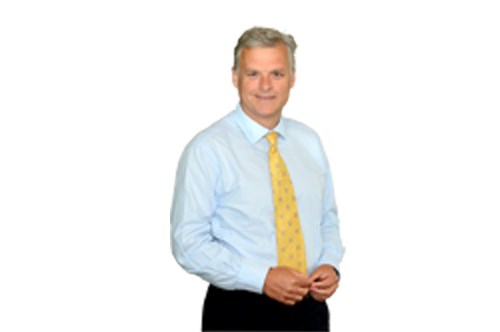
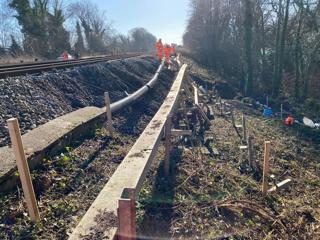
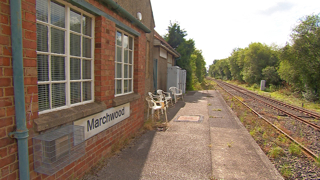
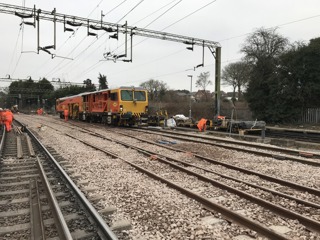
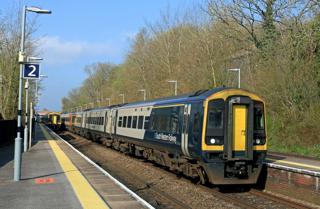
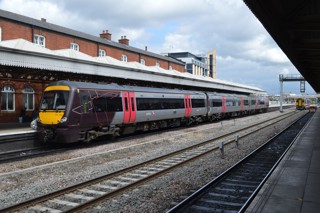

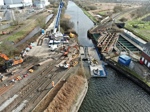







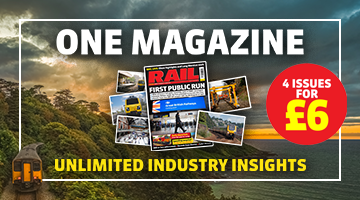

Login to comment
Comments
No comments have been made yet.